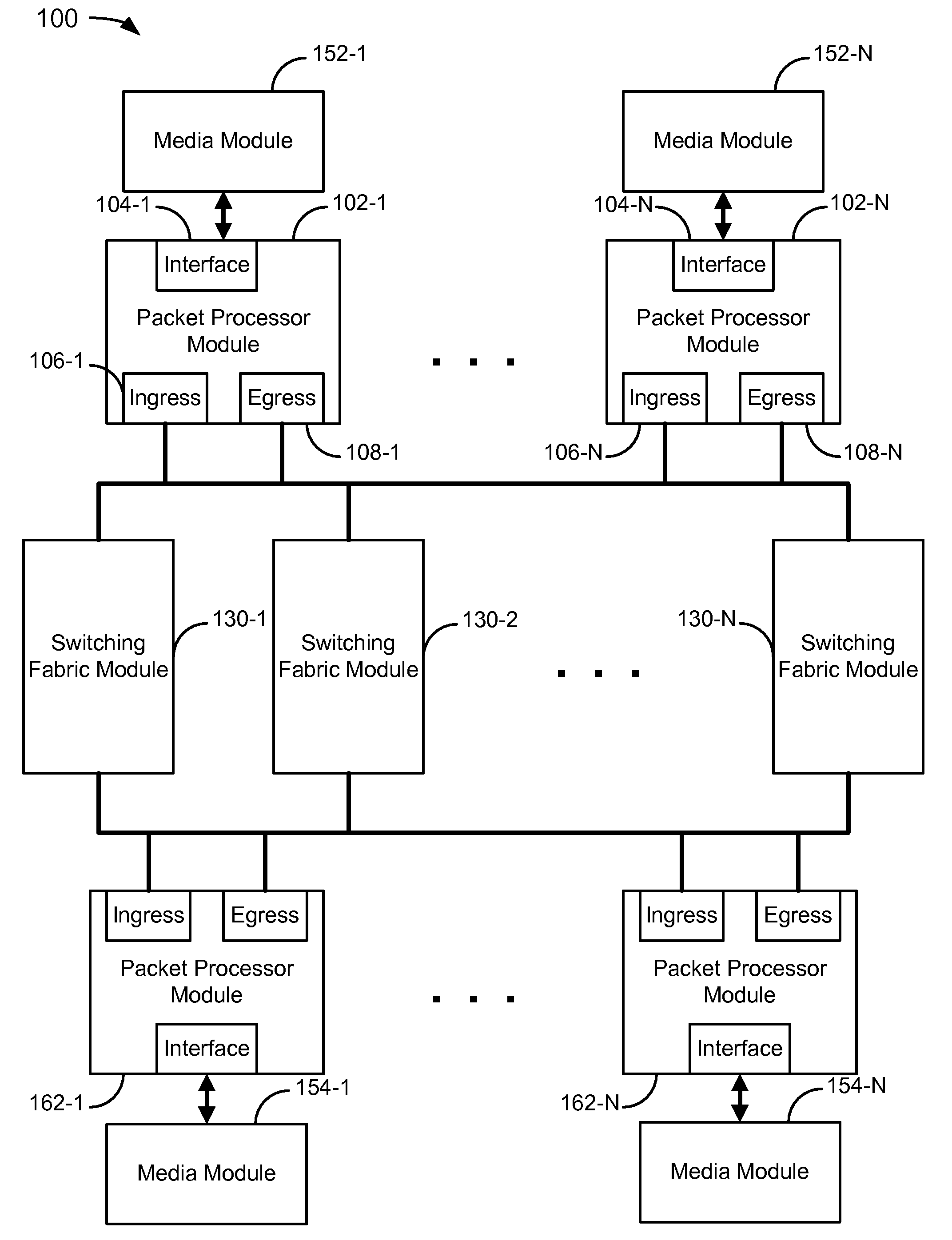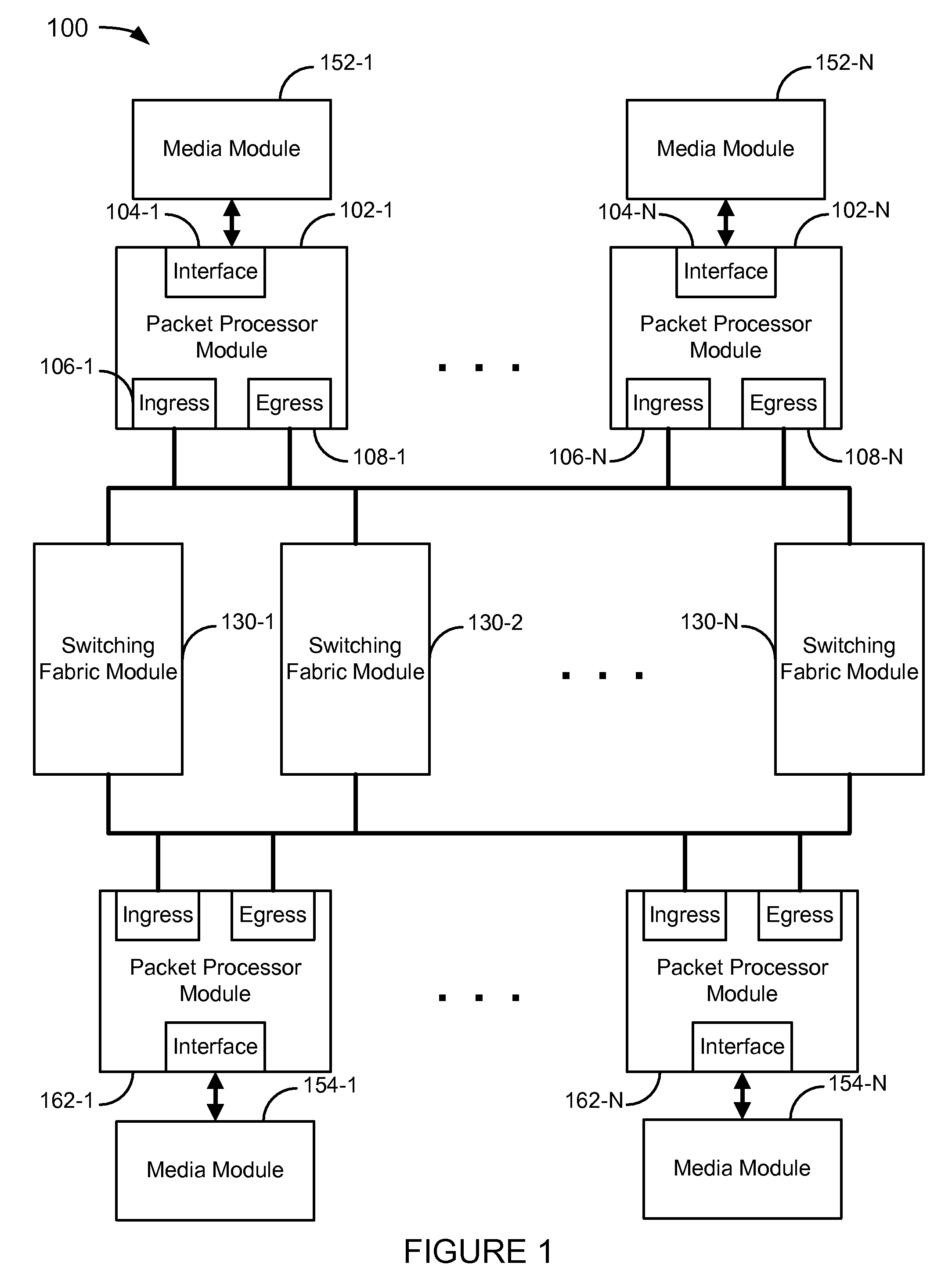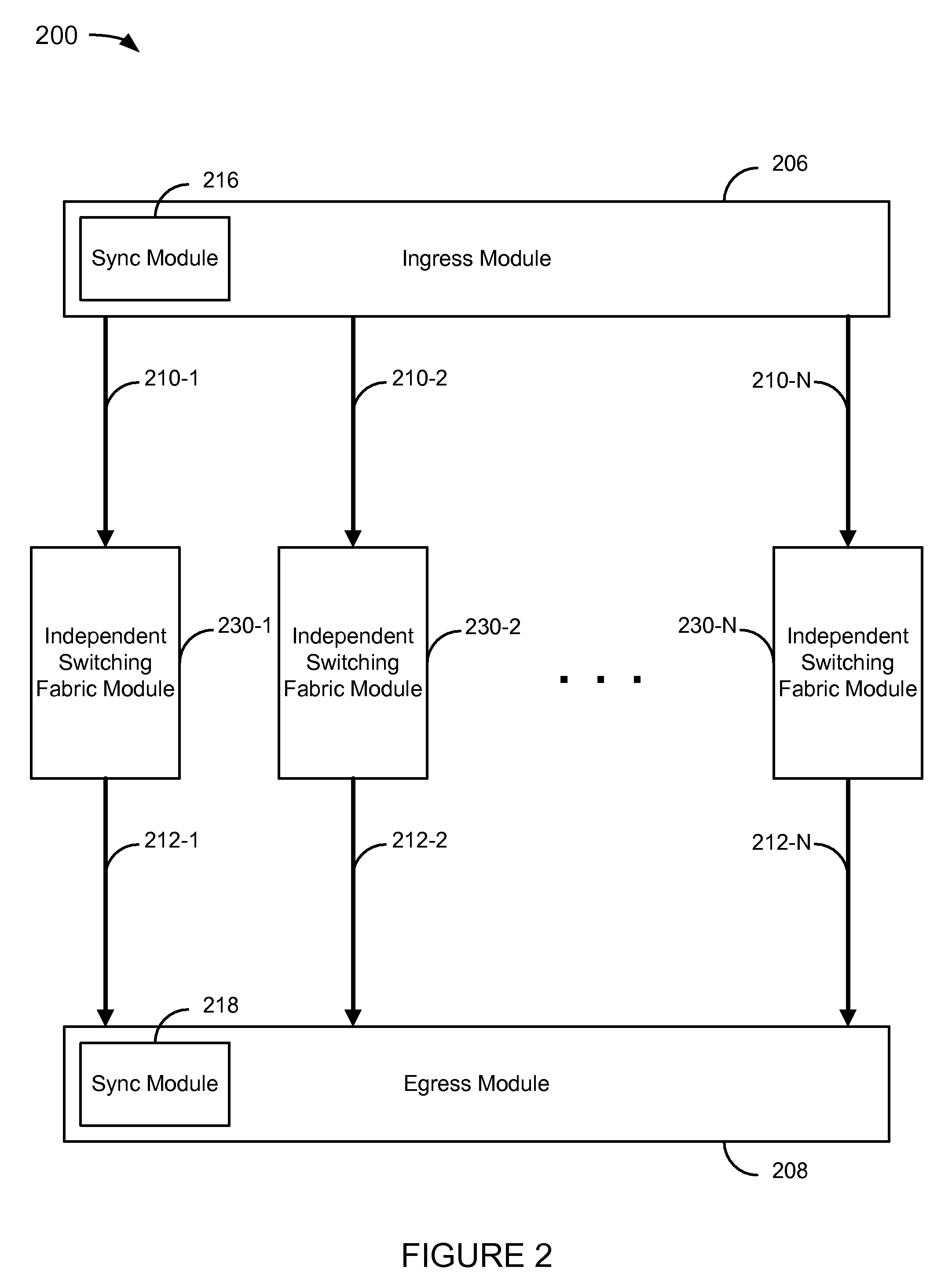Using reassembly queue sets for packet reassembly
- Summary
- Abstract
- Description
- Claims
- Application Information
AI Technical Summary
Benefits of technology
Problems solved by technology
Method used
Image
Examples
Embodiment Construction
[0020]As shown in the drawings for the purposes of illustration, an embodiment of the invention is a system for reassembling packets using cells received across a plurality of switching fabrics.
[0021]FIG. 1 is a block diagram of a traffic forwarding system 100 in accordance with an embodiment of the invention. The system 100 includes media modules 152-1 to 152-N and 154-1 to 154-N, packet processor modules 102-1 to 102-N (referred to collectively as the packet processor modules 102) and 162-1 to 162-N (referred to collectively as the packet processor modules 162), and switching fabric modules 130-1 to 130-N (referred to collectively as the switching fabric modules 3130). The media modules 152-1, 152-N, 154-1, and 154-N are respectively coupled to the packet processor modules 102-1, 102-N, 162-1, and 162-N. It should be noted that catch packet processor module may be coupled to one or more media modules. The packet processor modules 102 and 162 are coupled to the switching fabric mod...
PUM
 Login to View More
Login to View More Abstract
Description
Claims
Application Information
 Login to View More
Login to View More - R&D
- Intellectual Property
- Life Sciences
- Materials
- Tech Scout
- Unparalleled Data Quality
- Higher Quality Content
- 60% Fewer Hallucinations
Browse by: Latest US Patents, China's latest patents, Technical Efficacy Thesaurus, Application Domain, Technology Topic, Popular Technical Reports.
© 2025 PatSnap. All rights reserved.Legal|Privacy policy|Modern Slavery Act Transparency Statement|Sitemap|About US| Contact US: help@patsnap.com



